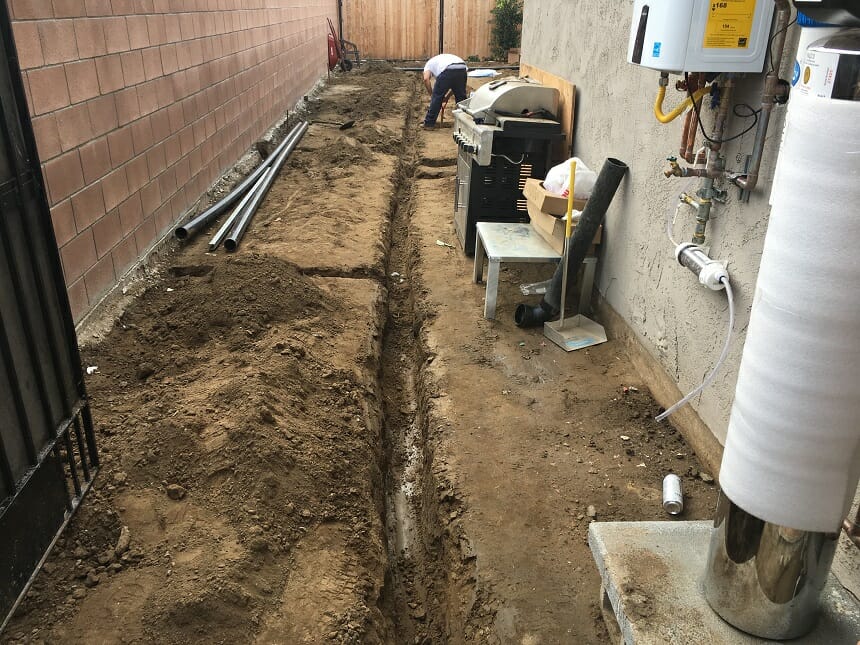The side sewer is a pipe system that connects the drain pipes in your home to the city main sewer line. Most of us never think about our plumbing pipes or sewer lines until something goes wrong. But, side sewer and sewer line problems, in general, have the potential to be the biggest problems for any homeowner or property manager. A regular
annual plumbing inspection can help you to identify any potential issues and avoid any nasty surprises. Let’s take a closer look at the side sewer, some of the potential problems and how you can take better care of this pipe system.
3 Side Sewer Problems Explained
The most common forms of damage to a side sewer pipe are shifting soil, local digging, or an intrusion by tree roots. Any of these problems can cause a crack or break in the side sewer pipe, and this may be easy to notice. If you see patches of smelly sewage in your yard, there is a break in the line. The side sewer pipe can become choked shut by a clog, soil entering the pipe or the growth of a tree root system. All of these would block the pipe, the sewage has nowhere to go, and it will back up into the home. This is extremely unpleasant to clean, but the sewage is also a serious health hazard, and the problem will continue until the side sewer pipe is repaired.
All of the problems mentioned above can occur due to accidental damage. But, like any plumbing pipes a side sewer pipe can simply wear out over time and cracks will begin to form. The lifespan of the pipe will depend on the material they were made with, concrete, copper, and PVC last a long time, but no plumbing material can last forever. The formation of smaller cracks and breaks will release low levels of water and sewage that act as a source of food for nearby plants and trees. This is why plant growth is more virulent near a leak, and this is how tree roots are attracted to the side sewer pipe in the first place.
Finally, the source of the problem may be a stubborn clog that’s blocking the pipe. Some people flush items down the toilet and into their sink drains that should go in the trash instead. These items will combine with grease and other sticky materials to form a formidable clog that’s difficult to remove. A professional plumber should be able to shift the clog manually, or they may need to use a hydro jet system. To avoid these problems, only flush human waste and toilet paper and don’t allow food or other debris to enter your drains.
The Responsibility for Your Side Sewer
Some people believe that the responsibility for their side sewer pipes ends at their property line, and this is not true. The property owner is responsible for the side sewer pipes on their property and the portion of the system that extends out of the footprint of their property that connects to the main sewer line. This is why it’s important to schedule a regular inspection and some essential maintenance for your plumbing system.
By Giovanni Longo President Flood Brothers Plumbing
Giovanni Longo is a 3rd generation master plumber who has been practicing his craft and trade in the greater Los Angeles area for well over a decade and a half. A plumbing and hydraulics-engineering innovator, Giovanni’s particular world-class expertise focuses on dealing with challenging sewer system designs as well as resolving complex commercial and residential draining issues. As a certified Flood Mitigation expert, he is also well versed in a wide variety of water damage and remediation solution.





